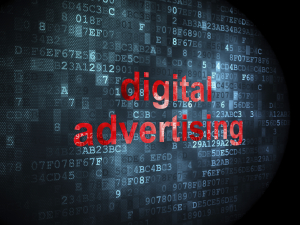
Remember when your browsing was cluttered with those annoying pop-up ads for products you would never consider buying? Gone are the days where brands were forced to buy bulk space blindly, resulting in people who would never want to buy their products/services being shown their ads.
Today, programmatic advertising ensures that digital advertisers are able to target their audience, based not just on their demographics and devices, but also their online behaviour. Today, a user is shown ads in real time even based on the weather of the city he/she lives in. Today’s technology allows advertisers to synchronise live television commercials with pre-roll digital video ads across computers, laptops, and mobile devices.
For example, if you are an avid reader of Mashable and an equally enthusiastic reader of a local food blog, it makes more sense for an advertiser to reach you through the comparatively less expensive placement of ads on the food blog rather than Mashable.
Business Insider Intelligence predicts that in the US alone, close to $ 15 billion will be spent this year on programmatic advertising. So what is programmatic advertising? It quite simply means automatic. A lot of people confuse programmatic advertising to buying ads through auctions, otherwise known as real-time bidding; but that’s only one of the many ways you could buy ads programmatically.
Programmatic is often described by experts as the future of online advertising. While doing your research on the subject, you might have stumbled across jargon such as supply-side platforms, demand-side platforms, real-time bidding engines, and ad exchanges. I will try and simplify each of these terms to help those of you who are new to this subject.
Ad inventory: Ad inventory is the amount of ad space a publisher has available to sell to an advertiser.
Programmatic RTB: It’s like Google AdWords, only it’s for display and not for search results. To understand more about RTB, please watch this video by Google Small Business.
Ad exchange: As a webpage loads, if it has ad space for real-time bidding, information about the user viewing that particular webpage is passed on to an ad exchange. An ad exchange is an open marketplace that facilitates the selling and buying of online ads. With a robust auction process in place, the ad space will be given to the highest bidder and then the ad is served to the user. Ad exchanges include companies like OpenX, Microsoft Ad Exchange, and AppNexus.
Ad network: An ad network helps a publisher package and monetise inventory that is unsold. This is different from an ad exchange, as ad exchanges collect info from several publishers and auction it off in an RTB environment at the impression level. Ad networks include companies like AdSense, Infolinks, and Tribal Fusion.
Ad server: It is a computer, typically run by a third party, which tracks and delivers online ads independent of the website it’s being displayed on. An ad server is usually deployed to establish the trust between publisher and advertiser, as all the statistics are maintained by a third party. Ad servers include companies like Atlas (now acquired by Facebook), DoubleClick by Google, and Pointroll.
SSP (supply side platform) & DSP (demand side platform): Publishers use SSP to sell inventory and advertisers use DSP to buy inventory. This removes the need for a sales force and a huge amount of time as the decision to bid on an impression is made almost immediately and the highest bidder wins the inventory. SSPs include companies such as OpenX, Smaato, Rubicon, and DSPs include companies such as MediaMath, Invite Media and Dataxu. Some DSPs are focused only on channels such as mobile or video.
Agency trading desks (ATD): A trading desk is usually set up to benefit an agency and its clients. It works on the lines of a stock exchange, only it buys and resells media in large volumes. Marketers make use of inventory obtained through ATD and optimise it using DSP when there’s a need for retargeting. All the major holding companies such as Omnicom, Havas, and WPP have agency trading desks.
Programmatic direct: This is also known as programmatic premium, automated guaranteed, and programmatic guaranteed. This is an automated process of buying guaranteed ad space without an auction. Companies like PubMatic offer programmatic direct services for buyers. The diagram below shows how the entire programmatic ecosystem works. (Credit and thanks to IAB for the diagram below.)

While there are ad tech companies that provide bundled programmatic buying services, there are companies who specialise in specific areas. Some of these companies have even gone on to expand their capabilities to other aspects of the programmatic ecosystem; however, this is where they started. This LUMAscape graphic helps understand the ecosystem better.

LUMAscape also has an interesting compilation of graphics on searches, video, mobile, social, and a lot more here.
Let’s take a look at how a few brands have successfully adopted programmatic advertising.
P&O Cruises and their 60% CTR: Using a combination of XML real-time feed and dynamic retargeting, consumers were shown the most up-to-date information on cruises they had previously viewed on the brand’s website. The Sizmek tag manager helped the brand build distinct retargeting pools based on destinations, holiday types, home income, and several other parameters. Using dynamic creative retargeting, the campaign generated a staggering 60% CTR compared to 0.05% CTR from a static campaign in 2015, and 0.08% in 2016.
Nike’s phenomenal shot: Nike has always been known for pushing the boundaries in advertising. This time, the brand has decided to capture the excitement and energy of the FIFA World Cup. Within moments of a memorable match, Nike delivered 3D display ads across apps and sites in 15 countries. Taking it a notch higher, fans were allowed to interact with these moments, make them their own and also share them on their social channels. Programmatic made it possible for Nike to deliver a mobile rich experience resulting in over 2 million engagements. Watch this case study.
KLM increased its ROI by 200%: KLM has been an early adopter of programmatic buying. The brand used Google’s DoubleClick digital marketing to build its brand, attract new audiences, and drive sales. The transparency in costs, control over spending, an easy campaign setup, and the ability to monitor results in real-time, helped KLM reduce its CPA by 50% and increase ROI by 200%. Here’s how they did it.
Lego and their $ 5 CPA: Targeting users with a strong intent to purchase, targeting highly qualified prospects within FBX (Facebook exchange) helped Lego achieve 65% conversions within the first five days of the campaign at a CPA of $ 5. A superb example of how a motivating and engaging campaign, coupled with the strong analytical approach, can result in high conversions. Read more about the case study here.
The Good
- Audience-driven placements: The process usually begins with retargeted and targeted impressions. Hence, the programmatic advertising process is generally more audience-driven than media driven. With ultra-precision targeting, the advertiser avoids paying for the wrong kind of impressions.
- Multiscreen experience: For a long time now, programmatic advertising has been perceived as a direct response medium, relying on remnant publisher inventory. The technology has matured so much that it’s now possible for brands to deliver large-scale branding campaigns across premium inventory on multiple screens backed up by audience data and supported by robust metrics. Brands like Kellogg & Nike have proven it time and again.
- Real-time visibility: Programmatic uses real-time data to give advertisers the visibility of how consumers are interacting with their communication across multiple platforms and devices. This helps brands come up with more appropriate and targeted messaging that will resonate well with the different segments of their target audience, thereby achieving the desired marketing objective.
- One at a time: Programmatic advertising enables the advertiser to serve one specific ad to one consumer in a single context. It goes to the extent where an advertiser decides which consumer gets to see what ad and when.
- Pay for performance: Advertisers will only be billed if the ads are served to their desired target audience.
The Bad
- Take my leftovers: A majority of publishers across the world are primarily focused on selling ad spaces via traditional means, and only opening up the leftover inventory to the programmatic landscape. The premium placements, including home page takeovers, interstitials, and above-the-fold placements are not usually up for the ad exchanges or DSPs to bid for.
- Not often at the right time: Most often, ads are shown to the users for something they might have been interested in a week ago. Users might have already made the buying decision by the time the ad was shown. This may impact the brand negatively from the user’s perspective because they might be conceived as too slow.
- The sense of intrusion: Several online users are not comfortable with companies profiling them based on their demographics, buying history, and literally tracking their every move on the internet. This is clearly a concern for marketers and advertisers, as it could affect the process of gaining the trust of potential customers.
The Ugly
- Do I have control over placements: Since it’s all done automatically, the digital strategist or the marketer doesn’t usually have a clear visibility of where their ads are placed, unless the proper analytic tagging and negative category markings are in place. The issues mostly come from sites, also referred to as bad actors, which claim to have significant traffic, while not providing audiences with useful content or information and are only focused on getting traffic by deploying black hat techniques. We call it different names including fraudulent impressions, bot traffic, suspicious traffic, etc. It not only affects advertisers, but also the entire programmatic ecosystem.
- Game of metrics: Across open marketplaces, it has become seemingly easy for fraudsters to game metrics such as click-through rates and view-through conversions. Usually, the media partners who recorded the last view or the conversion event are often rewarded. In some cases, such rewards lead the programmatic optimisation towards sites that generate suspicious traffic, thereby creating higher conversions in the dashboard. But in the end, the results essentially boil down to zero brand exposure and no actual consumer responses.
- Did anyone see my ad: While the industry has given the green light for media sellers and buyers to transact based on viewability, the difference in measurement of viewability between different vendors hinders the transparency layer. Several surveys indicate that ads served directly by the publishers to brands are more viewable than those delivered through programmatic deals.
A few may claim that programmatic advertising will eventually replace human beings. Technology is being deployed to replace some of the most painful tasks such as insertion orders and ad tags, but human beings are still required to strategize and optimise campaigns. With programmatic in place, advertisers, agencies, and publishers will spend their valuable time customising campaigns and achieving desired marketing objectives over getting caught down with mindless paperwork. Technology promises to make the media buying process cheaper, more transparent, and even more efficient. The behavioural targeting capabilities of technology majorly rely on tracking cookies, and hence, can prove ineffective on mobile devices. The industry is also conquering challenges such as poor inventory quality, URL masking and not-so-accurate cross-device targeting. However, looking at the numbers and success stories so far, I can only conclude that programmatic advertising coupled with data-driven creatives can deliver highly effective digital advertising campaigns, and that it’s here to stay.
Thank you for taking your time to read through the guide. I would be happy to answer any queries you may have, with the little knowledge I have acquired about the subject over a period of time.
[I contributed this piece as part of Kstart’s Digital Marketing Survey Report 2016, which also covers insights from other marketing leaders. The complete report can be downloaded from here – India Digital Marketing Survey Report 2016]
(103)
Report Post




